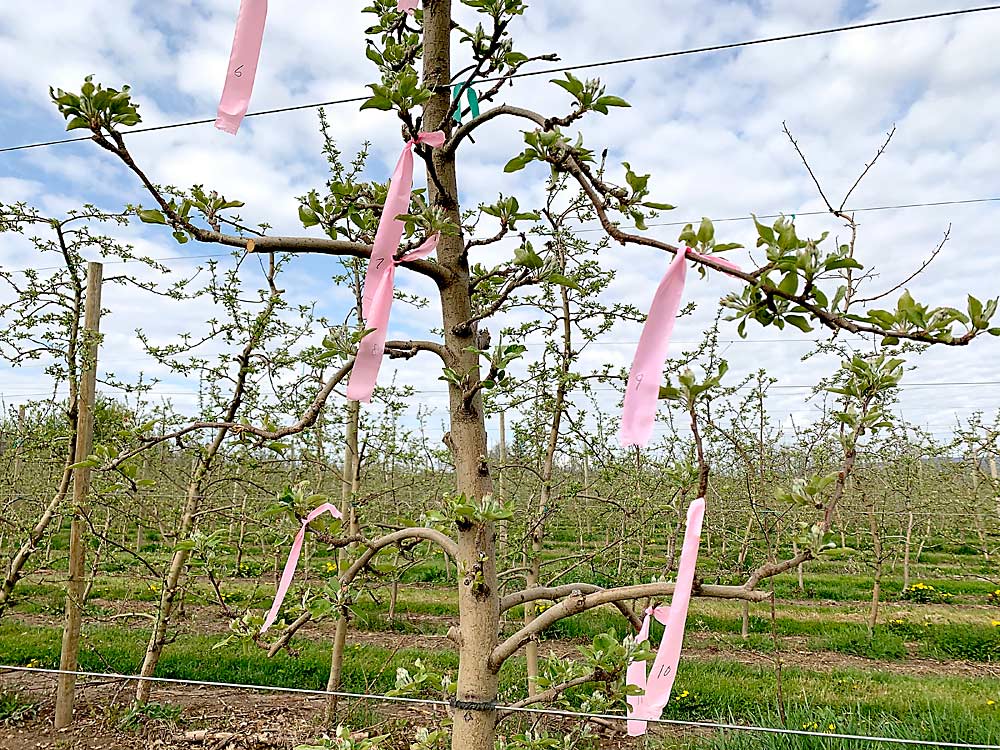
The pollen tube growth model has the potential to help New York apple growers hit their target crop loads, but it’s a demanding tool and there’s still much to learn about how to use it in the state.
Cornell Cooperative Extension researchers have spent the last few years studying the bloom thinning tool, working closely with commercial orchards throughout the state. The pollen tube growth model (PTGM) can be found on Cornell’s Network for Environment and Weather Applications (NEWA) website at ptgm.newa.cornell.edu.
In Northern New York’s Champlain Valley, extension tree fruit specialist Michael Basedow used the model with three growers this year, with funding help from the Northern New York Agricultural Development Program.
He said the first step in the PTGM process, and a key input for the model, starts with determining the target crop load for each orchard block. Then, as king blooms begin to open, growers measure 50 king flower styles and enter their average length into the model.
King blooms must be closely monitored as they open, in order to accurately run the model. Once the target number of kings have opened, the model’s clock starts ticking.
Based on weather data from NEWA, the model estimates the growth of pollen tubes to predict when they have grown the full length of the style, which sets the target number of fruit. Once this occurs, apply bloom thinning sprays: the growers Basedow worked with used ammonium thiosulfate, ATS, while lime sulfur and oil is common in the West.
He said they are still experimenting with the right timing for the first application, but the subsequent one or two applications should be applied at 60 percent to 80 percent of pollen tube growth, to prevent further fertilization.
One of the challenges of using the PTGM in Northern New York is the variability of weather during bloom. The windows of opportunity for the first spray are tight, so if you have bad weather at that time, you’ll likely miss your window.
Maintaining precision from block to block can also be difficult, as small-scale variations in orchard topography, rootstock and distance to the lakeshore all impact bloom opening dates. But the growers Basedow has been working with all want to continue evaluating the model and continue “dialing in” on achieving their ideal crop loads, he said.
“Any grower with a NEWA station could try this, but we’re still tackling the logistics of scale and the aspect that labor plays in the process,” Basedow said. “You need to have someone tag the trees, do the counts — it takes time during a time of year when other things get your attention. We’ve still got a lot of questions to iron out, so if you do intend to try it, start on a limited scale to build your confidence over multiple seasons.”
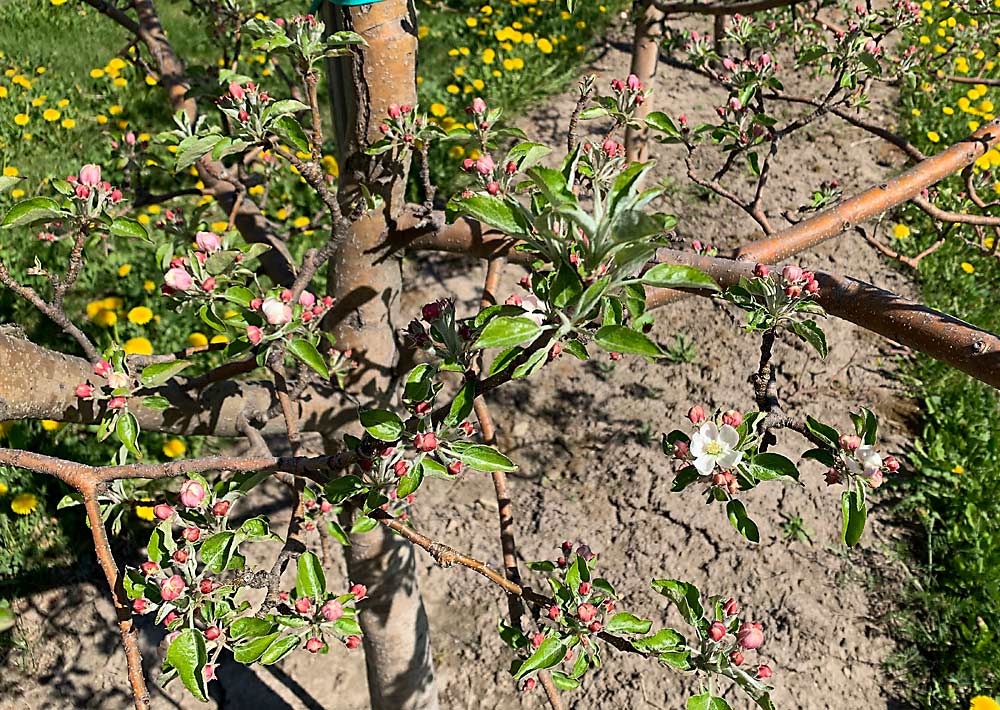
Cornell horticulture professor Greg Peck was one of the researchers who developed the PTGM at Virginia Tech before Cornell hired him in 2015. He said the model was developed with Washington state in mind, where its use has become standard practice.
Eastern Washington’s warm, dry weather is ideal for chemical bloom thinning, whereas many parts of the Northeast are more likely to have cold and frost events during bloom. Thinning flowers poses more risks when the trees might already have freeze damage — so in a state like New York, the efficacy of bloom thinning must be evaluated every year. In temperate, dry years, however, Peck said the PTGM is a good tool for deciding when to apply bloom-thinning materials.
In Western New York, extension specialist Mario Miranda Sazo and the growers he worked with got wildly different results from the PTGM between 2019 and 2020.
“Last year, we got excellent results with the pollen tube growth model,” Miranda Sazo said. “This year, it was a lot more difficult.”
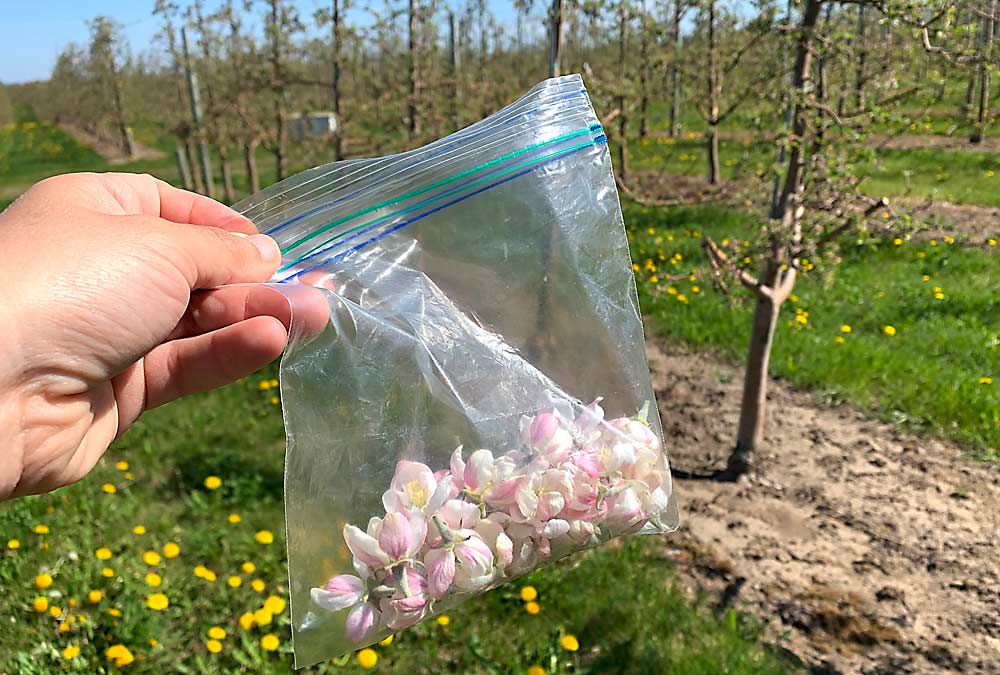
It got very hot, very suddenly, during the 2020 bloom period, and the flowers developed much more aggressively than anticipated — so fast that the growers “lost control” of the PTGM process, he said.
“We’re not used to that,” Miranda Sazo said. “I don’t think we’ll have another bloom period like we had this year.”
He still thinks the PTGM can be an “amazing tool” for early blossom thinning, especially for varieties such as Honeycrisp, Fuji, Gala and NY 1 (marketed as SnapDragon). Growers need to be willing to constantly monitor their trees, however, and to count and recount blooms until they hit their target number.
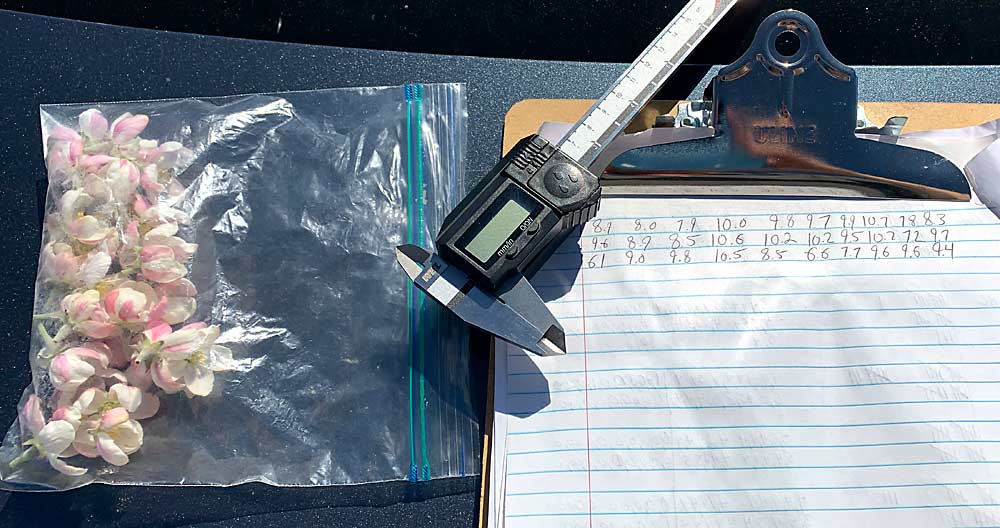
The extra amount of work required in a short window of time can make use of the PTGM kind of stressful for a grower, said Jason Woodworth, co-owner of Lamont Fruit Farm in Waterport, New York. Your spray team has to “stop on a dime” to spray a specific variety at a specific time. When you have five orchards within 20 miles of each other, that can get very complicated.
Robert Brown, co-owner of Orchard Dale Fruit Co., also in Western New York, has been using the PTGM for two years. He said if you do everything right and hit your blossom target, the resulting crop load is “almost a home run.” But you have to hit the blossom target, which means you “basically have to camp out in the orchard” during bloom because pollination can occur so quickly.
Brown doesn’t follow the model’s exact instructions: He includes his own observations of the weather, and knowledge of his blocks and how they perform, in his decision-making process.
“You have to be able to blend what the model is telling you with your own experience,” Brown said. “If you can do that, you can get very nice results.”
He said the PTGM works better for some varieties than others. It works great with Honeycrisp, which has a nice king bloom followed by a side bloom, but not so great with Gala, where sometimes the top of the tree can bloom before the bottom, or vice versa.
Brown will continue using the PTGM on Honeycrisp. Even though he doesn’t follow the model’s instructions to the letter, he likes that it forces him to spend more time in the orchard, learning about his trees — which, in the end, makes him a better grower.
—by Matt Milkovich

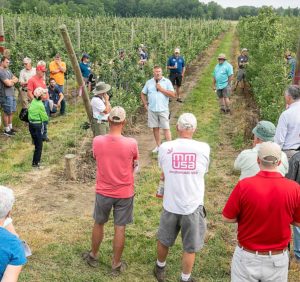
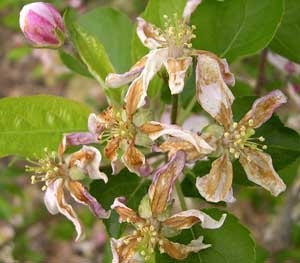





Leave A Comment